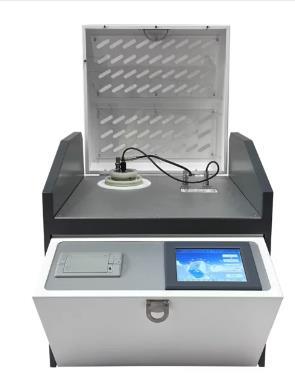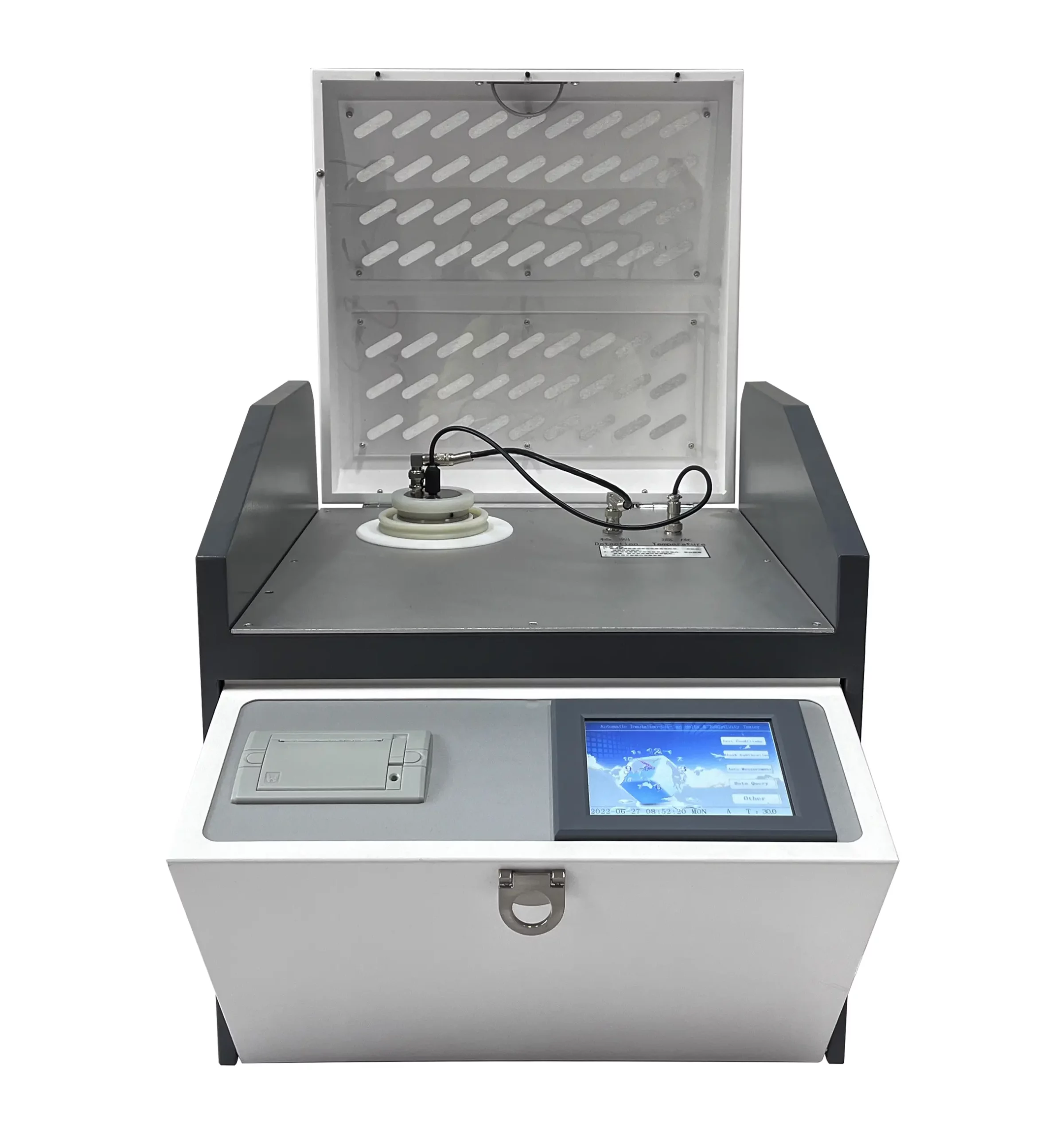What are the typical accuracy parameters and measurement ranges available in Dielectric Loss Testers?

Dielectric Loss Testers typically offer varying accuracy parameters and measurement ranges to suit different testing requirements.
Here's an overview:
Accuracy Parameters:
-
Standard Accuracy:
- Most Dielectric Loss Testers provide standard accuracy levels suitable for routine testing procedures. These accuracy levels comply with industry standards and ensure reliable results for regular assessments.
-
Enhanced Accuracy:
- Certain high-end or specialized testers may offer enhanced accuracy levels. These testers provide more precise measurements with reduced margins of error, catering to applications where higher precision is critical.
Measurement Ranges:
-
Loss Tangent (Tan Delta):
- Dielectric Loss Testers measure the loss tangent (tan δ) of insulating materials, which represents the dissipation factor or the ratio of dielectric loss to stored energy in the material. Typical measurement ranges for loss tangent can vary from very low values (close to 0) up to 1 or even higher, depending on the sensitivity of the equipment.
-
Frequency Range:
- Testers might offer a range of frequencies at which the measurements can be taken. Common frequency ranges include low frequencies in the Hz range up to several kHz or MHz for materials used in different electrical systems.
-
Voltage Levels:
- The testers may have adjustable voltage settings or predefined voltage levels suitable for different types of insulating materials. Voltage levels can vary from low voltage ranges (e.g., tens of volts) to high voltage ranges (e.g., several kV) depending on the application.
-
Temperature and Environmental Compensation:
- Some advanced testers incorporate features to compensate for temperature variations and environmental conditions, ensuring accurate measurements across different operating conditions.
Factors Influencing Accuracy:
-
Calibration: Regular calibration checks are essential to maintain accuracy levels and ensure reliable measurements.
-
Quality of Components: The accuracy of the tester depends on the quality of its components, such as frequency generators, measurement circuits, and sensors.
-
Operator Proficiency: Accurate results rely on the operator's skill in conducting tests and following recommended procedures.
-
Environmental Factors: Temperature, humidity, and other environmental conditions can affect accuracy. Testers with compensating features help maintain accuracy under varying conditions.
Dielectric Loss Testers are designed to meet industry standards and accommodate various types of insulating materials used in electrical systems. dielectric loss tester The availability of different accuracy parameters and measurement ranges allows operators to select suitable settings for specific testing requirements, ensuring accurate assessments of dielectric properties in different materials.
Can you discuss the advantages of on-site testing with a Dielectric Loss Tester compared to laboratory-based testing methods?
On-site testing with a Dielectric Loss Tester offers several advantages compared to laboratory-based testing methods:
-
Real-Time Assessment: On-site testing provides immediate results, enabling quick assessments of insulating materials without the need to wait for samples to be transported to a lab and tested, which can take time.
-
Cost and Time Efficiency: Eliminates the need for transportation, reducing costs associated with shipping samples to a lab. Additionally, it saves time as there is no waiting period for lab results, allowing for immediate decision-making.
-
Reduced Disruption: Conducting tests on-site minimizes disruption to operations since equipment and materials can be tested without being removed from their working environment, reducing downtime.
-
Accurate Field Conditions: Testing materials in their actual operating environment provides a more accurate representation of their condition under real-world conditions, accounting for factors like temperature, humidity, and other environmental variables.
-
On-the-Spot Troubleshooting: Immediate results allow for quick identification of potential issues or degradation in insulation materials, enabling on-the-spot troubleshooting and decision-making regarding maintenance or repairs.
-
Optimized Maintenance Schedules: Immediate testing on-site allows for timely assessments of equipment, aiding in the development of optimized maintenance schedules and minimizing the risk of unexpected failures.
-
Resource Management: On-site testing helps in efficient resource management by pinpointing problematic areas or materials, allowing resources to be directed precisely where they are needed.
-
Comprehensive Testing: Testing can be performed on various parts of equipment or different types of materials within a system, providing a comprehensive assessment of the entire setup.
-
Convenience: Conducting tests on-site provides convenience as operators can directly access and test equipment without the logistics involved in transporting samples to a laboratory.
-
Immediate Action: Immediate results enable immediate actions to be taken if critical issues are identified, preventing potential failures or hazards.
While laboratory-based testing may offer highly controlled environments and specialized equipment, on-site testing with a Dielectric Loss Tester provides a practical and efficient way to assess insulation materials in their actual working conditions, facilitating proactive maintenance and ensuring the reliability of electrical systems.

- Art
- Causes
- Crafts
- Dance
- Drinks
- Film
- Fitness
- Food
- Juegos
- Gardening
- Health
- Home
- Literature
- Music
- Networking
- Other
- Party
- Religion
- Shopping
- Sports
- Theater
- Wellness
- IT, Cloud, Software and Technology


